Please maximize and play LOUD!
This spec teaser film, directed & 3D CGI by ArTect’s publisher & writer Oliver Zeller, reveals an evolution in computing interaction. Within a setting inspired by the penultimate scene from Stanley Kubrick’s 2001: A Space Odyssey.
Continue reading ‘Immersive Cocoon “2011″’
OZ | May 4th, 2009 | Architecture, Books and Film |  | Bookmark
| Bookmark
During the nineteenth century, European and American artists flocked to Eastern cultures, from Morocco to India. Their works fueled the exotic and mythical perception of the Orient with cinematic depictions of islamic culture that continue to influence the arts today. These artists are commonly referred to as the Orientalists.
Last year while exploring and working in Marrakech I came across numerous books on or related to the topic. Following are some noteworthy selections.
If you’re ever in Marrakech, be sure to visit the oldest book store in Marrakech, open since 1948, it can be found within the medina’s souks. Publisher ACR also has a well stocked shop buried in Gueliz, the city’s French section.
Continue reading ‘Book Watch | Orientalists’
OZ | January 15th, 2009 | Architecture, Film and Print |  | Bookmark
| Bookmark
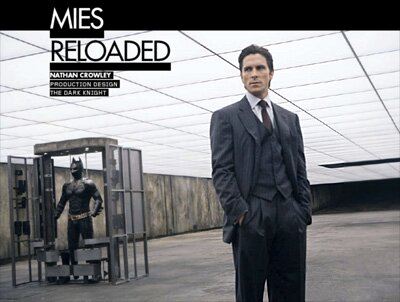
Through issue sixteen of the superlative MARK Magazine, Tino Schaedler and Alice Charlotte have offered a commentary on the production design of Hollywood’s latest releases. In an ArTect.net online exclusive, three of the articles originally featured in the Cross Section segment of issues 12, 13 and 16, are now available for download in pdf format.
The Golden Compass
The Darjeeling Limited
The Dark Knight
OZ | December 19th, 2008 | Film |  | Bookmark
| Bookmark

Infinite white spaces have proliferated as a basis for virtual realities, exemplified by the Matrix film trilogy. In the most iconic example, an armory session begins with gun racks rushing toward the screen. A visual demonstrated in the trailers that helped catapult the Matrix to box office success. One that inspired other works including the once oft-played commercial, AutoTrader Whoosh.
The aforementioned scene ultimately overshadowed a more intriguing infinite white space. In the Matrix Reloaded, six off-white clad individuals arranged in circular formation constitute Zion Control. It’s a utopic sight as they manipulate multi-touch HUD’s atop physically three dimensional wireframe visuals. A scaled blueprint replication of reality, stylized to match the aesthetically pleasant grayscale interface.
Continue reading ‘Zion Control’
OZ | May 31st, 2008 | Film |  | Bookmark
| Bookmark
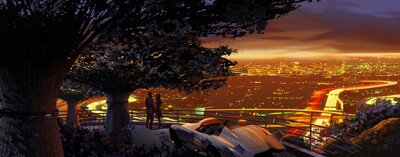
Once upon a time the kaleidoscopic menagerie of colors in Speed Racer were more grounded.
The Wachowski Brothers latest directorial effort following The Matrix is an overload on the senses, with live action colors “further ramped up digitally in post production.” Green, purple, yellow, orange and red emblazen the sets as outlined in two Los Angeles Times features, A Futuristic, Midcentury Movie Set for ‘Speed Racer’ and A ‘Speed Racer’ Time Warp.
Concept Artist Peter Popken offers an alternative conceptual route never taken via his blog.

Perspective, the Journal of the Art Directors Guild & Scenic, Title and Graphic Artists has been made available for free download. The magazine offers a fascinating look at the set design and art direction behind film & television productions.
Considering the difficulty in attaining copies in the retail stream, the free availability of issues in PDF format is a welcome move by the Guild. Unlike its cousins, American Cinematographer or the quarterly visual effects journal Cinefex, the articles in Perspective are frequently written by the artistic practitioners themselves.
The most recent February/March issue includes features on The Spiderwick Chronicles, Into the Wild, Best Picture Oscar nominee There Will be Blood and winner No Country for Old Men, Fox reality series Hell’s Kitchen and the CBS series Moonlight. Also featured, 5D: The Future of Immersive Design written by Minority Report production designer Alex McDowell, production designer John Mutto and art director Judy Cosgrove.
Continue reading ‘Perspective’
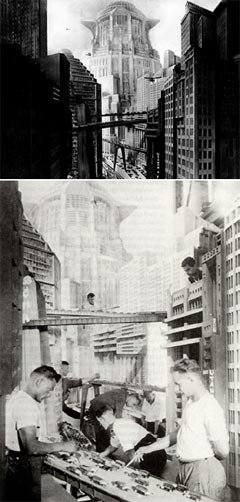
At the dawn of film in 1898, miniatures proved a vital special effects tool in recreating the sinking of the Battleship Maine during the Spanish-American War.
The following article offers a look at film miniature history from Metropolis to Titanic and its future in the CG age. Also featured, 2001: A Space Odyssey, Blade Runner, The Fifth Element, From the Earth to the Moon, Independence Day, Star Trek and Tora! Tora! Tora!. [Ed. Note: The proceeding article was originally written in 1998].
Download Realizing Epic Film Environments: Miniatures.
OZ | February 9th, 2008 | Architecture and Film |  | Bookmark
| Bookmark
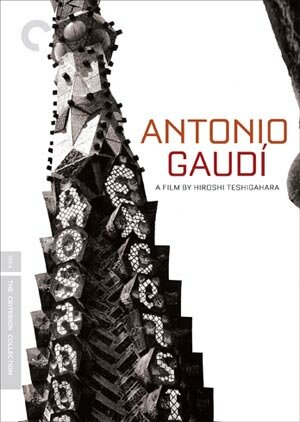
One wonders what influence the work of architect Antonio Gaudí (1852 - 1926) may have had if Adolf Loos had not jump started the modernist movement with Ornament and Crime. An essay that arguably marked the downfall of the Art Nouveau movement for which Gaudí has most commonly been associated with.
Granted, Art Nouveau’s time was destined to be short-lived. Its expensive cost was antithetical to the world’s burgeoning capitalistic industrial economies. Furthermore Gaudí’s designs were often polarizing, leading to the mistaken belief that he himself was the etymology behind the adjective gaudy.
His individualistic work, also influenced by nature and Gothic architecture, has made him one of the world’s most eternal architects. He also has the unique distinction of being the architect behind the longest under construction building in modernity. The Gaudí designed Sagrada Familia, a Roman Catholic church in Barcelona, began construction in 1882 and is slated for completion in 2026. As Gaudí once said, “My client is not in a hurry.”
On March 18th the Criterion Collection is releasing a “visual poem” of the architect’s work. A documentary by Oscar nominated director Hiroshi Teshigahara; further immortalizing the incredible architecture of Antonio Gaudí.
Continue reading ‘Antonio Gaudí Immortalized on Criterion DVD’
OZ | January 24th, 2008 | Architecture, Film and TV |  | Bookmark
| Bookmark
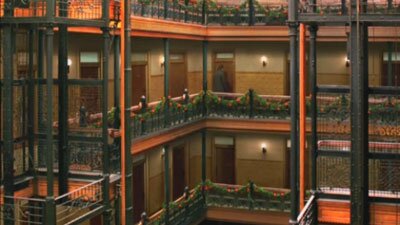 Pushing Dasies | Episode: Corpsicle
Pushing Dasies | Episode: Corpsicle
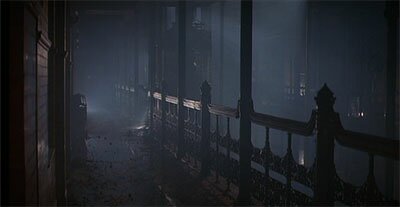 Blade Runner
Blade Runner
“But when Ridley decided to use the Bradbury, I was against it,” Fancher continues. “He’d come back from seeing the place with the location manager (Michael Neale) and was all excited. I told him, ‘Ridley, you can’t use the Bradbury Building. I know you’re from England and you think it’s a great place, and it
is a great place, but it’s already been done. Overdone. I’ve seen it already in a ton of movies. And even though I never watch TV, I’ve been told that the Bradbury’s been used for cop shows every week for the past ten years.’
“Now, I was trying to make the point that Ridley was from out of the country and didn’t realize that everyone already knew this building. But then Ridley looked at me and said, ‘Not the way I’ll do it.’ At the time I thought that was incredibly arrogant. But then I went to see Blade Runner and thought, ‘My God! Ridley was Right! No one’s ever seen the Bradbury like this before!” - FUTURE NOIR: The Making of Blade Runner by Paul M. Sammon.
OZ | January 15th, 2008 | Film |  | Bookmark
| Bookmark

Bisecting the horizon amidst expansive vistas of wheat resides a lone Victorian style mansion. It reminds me of Andrew Wyeth’s painting, Christina’s World, though its inspiration is culled from Edward Hopper’s House by the Railroad. It’s one of many stunning sights in the poetic Terrence Malick (The Thin Red Line, The New World, Badlands) film, Days of Heaven.
Set in 1916, “a Chicago steelworker accidentally kills his supervisor and flees to the Texas panhandle with his girlfriend and little sister to work harvesting wheat in the fields of a wealthy farmer.” Filmed in Alberta, Canada, primarily during magic hour, Days of Heaven lives up to its billing as one of the most beautiful motion pictures ever captured on celluloid. Originally unveiled in 1978, The Criterion Collection released a restored director-approved special edition last October and on December 27th, the Library of Congress inducted Days of Heaven into the 2007 National Film Registry. The Registry selects “25 “culturally, historically or aesthetically” significant films for induction each year.”
Continue reading ‘Days of Heaven’


















